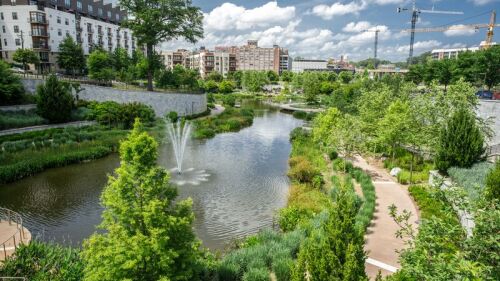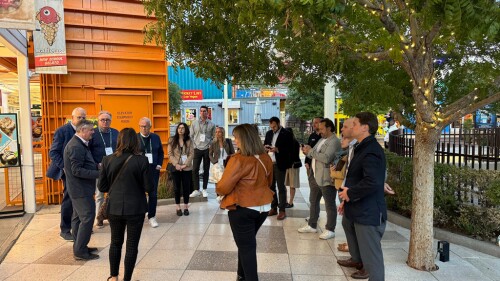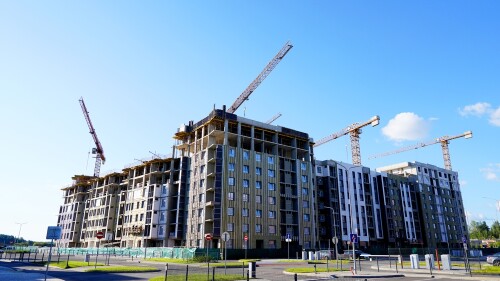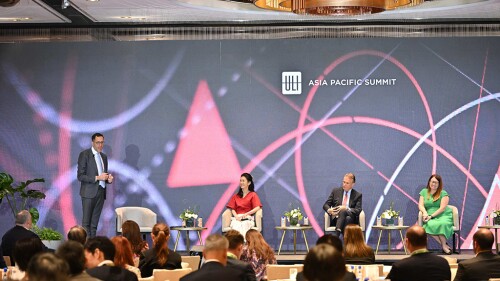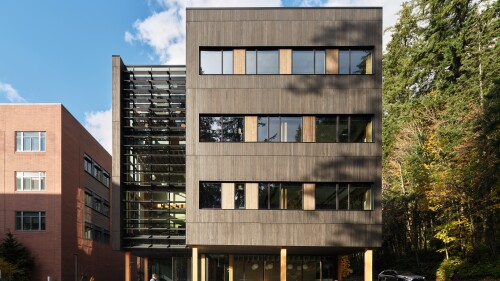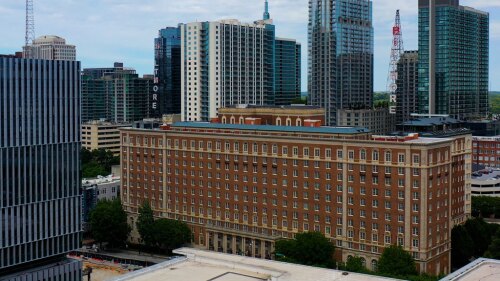What trends are shaping the future of the industrial sector? Four experts from ULI’s Industrial and Office Park Development Council talk about the industrial submarkets and property types that offer the greatest opportunities, challenges developers face in bringing new projects to market, ways artificial intelligence and emerging technologies are reshaping the sector, tenant priorities, and other key trends.
In the heart of London’s Covent Garden neighborhood, a complex of five Victorian-era structures—previously home to a seed merchant company, a brass and iron foundry, and a Nonconformist chapel, among other uses—have been restored and adapted into a single, cohesive office building with ground-floor retail and dining space. The three-year restoration preserved the property’s industrial heritage, yet it provides enough flexibility to meet the needs of today’s workforce.
A growing body of research indicates that physical space profoundly affects our brain health. The capacity of our buildings and public spaces to be regenerative in that regard remains largely untapped, however. The key resources for developing brain capital are brain skills—cognitive processes such as memory, attention, and critical thinking; and brain health—the overall functioning of an individual’s brain throughout that person’s life.
The Association for Real Property and Infrastructure (ARPI) has awarded a generous grant of $109,000 to the ULI Foundation to enhance cross-regional knowledge exchange and research related to infrastructure strategies, with a particular focus on collaboration between U.S. and British members. The ULI Randall Lewis Center for Sustainability in Real Estate will administer the grant.
Industry Voices
Many mixed-use projects get the hardware right. They feature a thoughtful mix of uses, beautiful buildings, and name-brand tenants. Far fewer get the “software” right—the pedestrian flow, the plaza experience, the hospitality-level service, and all the subtle details that turn a mixed-use project into something more. These elements transform a development into a vibrant, urbanesque destination—one that delivers on the promise of being a true community gathering place.
Since the 1980s, the Dallas suburb of Plano has attracted some of the country’s biggest corporate headquarters and established itself as a hub for major employers. But how did Plano revamp to meet the goals of a changing economy and a changing community? The city made a pivot that has been echoed in growing cities around the country: a major shift toward investing in parks and activating green space.
A seminar organized by the ULI Singapore NEXT Committee presented attendees with the little-known concept of real estate “tokenization,” or fractional investing/trading, as a potential bridge between private investors and direct ownership. Although not new, tokenization in real estate is a niche market, particularly in Asia Pacific, with Singapore hosting a small number of the specialized digital platforms.
In a landmark moment for California housing policy, Governor Gavin Newsom signed two transformative bills into law in June 2025—AB 130 and SB 131. They fundamentally reshape how the California Environmental Quality Act (CEQA) applies to infill housing. Enacted as part of the state’s broader budget package, these reforms remove major procedural barriers for urban multifamily projects and signal a new direction in the state’s effort to address housing affordability through increased supply.
Graduated students are invited to guest with ULI Product Council’s at the Fall and Spring Meetings, getting in-person networking with industry leaders in addition to tours and other discussions.
Although developers are skilled at building senior living communities that satisfy basic residential and health care needs, and that provide programs and amenities to cater to a variety of lifestyles, creating authentic, home-like environments that feel instantaneously familiar for this younger cohort is far more challenging. Such nuanced characteristics are distinctions in the market and can greatly ease the transition into senior living communities, not only for individuals, regardless of acuity level, but also for their families.
Capital Markets
A seminar organized by the ULI Singapore NEXT Committee presented attendees with the little-known concept of real estate “tokenization,” or fractional investing/trading, as a potential bridge between private investors and direct ownership. Although not new, tokenization in real estate is a niche market, particularly in Asia Pacific, with Singapore hosting a small number of the specialized digital platforms.
U.S. President Donald J. Trump signed the nearly 900-page One Big Beautiful Bill Act into law on July 4. The budget reconciliation legislation extends numerous provisions included in the 2017 Tax Cuts and Jobs Act that directly affect commercial real estate, including reinstatement of bonus depreciation and extension of the Qualified Opportunity Zone Program. It also incorporates provisions aimed at incentivizing affordable housing, including a significant expansion of the Low-Income Housing Tax Credit (LIHTC) program. At the same time, the new law makes major cuts to wind and solar incentives.
The closing panel at the 2025 ULI Asia Pacific Summit brought together real estate players from a wide range of geographies and capital markets roles. Audience polling at the start of the discussion revealed that Summit attendees believe the world will become more multipolar after a generation of American exceptionalism, with some audience members feeling that the U.S. will fall behind Asia or Europe.
Project Profiles
As the environmental impact of construction remains heavily scrutinized amid growing concerns around climate change and resource depletion, universities are turning to new design strategies that prioritize innovation, environmental integration, and sustainability.
In the heart of the Texas Triangle, an ambitious new vision is taking shape: Sandow Lakes, a 33,000-acre (13,355 ha) master-planned community in Milam County. The project’s first phase, known as The Switch, is already underway. Spanning 3,300 acres (1,335 ha), The Switch is an advanced manufacturing and logistics campus under development by Xebec. This supersite is poised to play a vital role in strengthening domestic supply chains by supporting the reshoring of critical manufacturing operations.
In Midtown Atlanta, the Georgia Institute of Technology Foundation is turning the 100-year-old former Biltmore hotel into a mecca for incubating technology startup ventures.
In Memoriam
Esteemed developer Tom Cousins, who was born and raised in Georgia, passed away late last month at age 93. Over the course of his extraordinary life, he became not only one of the most influential real estate and urban development visionaries of our time but also a philanthropist who vowed to create lasting change—and fulfilled that promise.
Joseph C. Canizaro, a past chair and trustee of ULI, passed away at age 88 on June 20, 2025. A member of ULI for more than 50 years, Canizaro built one of New Orleans’ most influential real estate development companies, Columbus Properties, which helped shape the city’s skyline.
Developer sought to improve people’s lives through her work.










